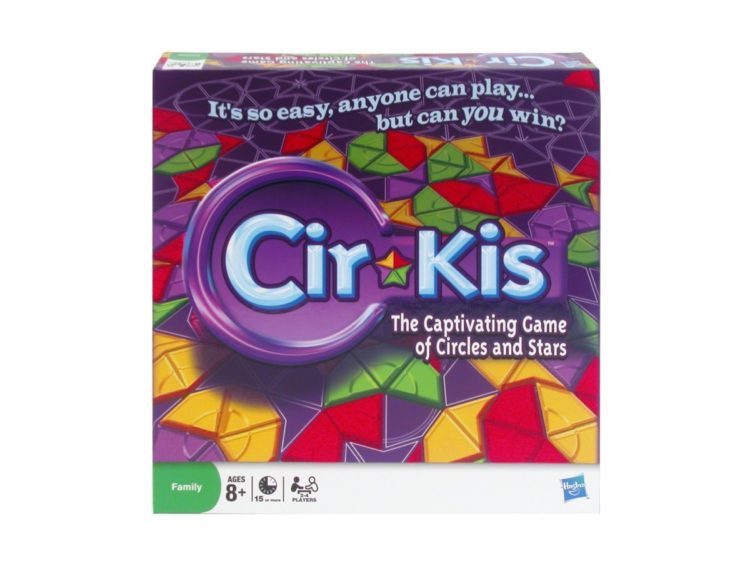 Cirkis is a game which combines following the leader and making shapes. The goal in Cirkis is to gain the most points (40 max) and you gain points by creating stars and circles. The twist in the game is that you must place your piece so it is connected to the piece of the previous player. While you play you want to consider how to gain the most points and free turns, while thoughtfully selecting which tiles to play. To score you can either finish a shape or be responsible for filling in the majority of the shape. Each shape is split into segments which provide students with experience with both fractions and geometry.
Cirkis is a game which combines following the leader and making shapes. The goal in Cirkis is to gain the most points (40 max) and you gain points by creating stars and circles. The twist in the game is that you must place your piece so it is connected to the piece of the previous player. While you play you want to consider how to gain the most points and free turns, while thoughtfully selecting which tiles to play. To score you can either finish a shape or be responsible for filling in the majority of the shape. Each shape is split into segments which provide students with experience with both fractions and geometry.
How to Play
The game board is a decagon and players are arranged so that they each face a corner. Each player begins with a set of pieces and places their scoring peg at zero. The youngest player is the first one to place their piece to begin the game, becoming the Leader. This player must put their piece inside the Center Ring or Center Star of the board. The pieces are properly placed when they snap into place. It is important to ensure that pieces are in the correct spots. Play continues to the player on the left. In order to place a piece, players must put their piece in a spot that touches the piece that was placed the previous turn (see picture to the right). The game pieces can touch edge to edge or point to point. Players can be awarded free turn when they do one of the following: they place a piece in a place where the adjacent pieces are filled if they complete the central star or they place the first Sliver piece (see the diagram of piece names below). To play a free turn the player must place their piece so that it touches any other piece on the board (see picture example below to the left).

If a player completes a shape, a circle or a star, the player earns 5 points. If a player has the most segments that form the shape they score 10 points. Turns can be lost if players cannot place a piece. If all players are unable to place a piece the game ends. The game can also end once a player reaches 40 points or if a player is able to place all of their pieces. If a player does place all their pieces they receive 10 bonus points. The highest score wins the game.
Optional Rules

The central star has a center ring (see picture to the right) around it and you can award 15 points to the player who has the most segments among those ten. Another optional rule is to extend the game by playing until one player has scored 100 points.
If you would like a PDF of the rules please click here.
Mathematical Processes
Communications [C]: Students will discuss which spot is the best place to attach their piece and which piece will give them the most points ultimately. As they are placing their piece they will discuss the possible rotations or translations that could occur. Another mathematical idea students will confer over is what “section” of a star or circle they possess which with guidance can be expressed in fractions, e.g. 3/5 of a star.
Reasoning [R]: During the game students will need to explain their reasoning to, potentially, three other players and have the opportunity to consider multiple different opinions. Students must play the game multiple times to analyze the strategies that benefit them and hinder their opponents. After they have found a few strategies they can use regularly, they can explain their advantage to their opponents.
Problem Solving [PS]: As students replay the game they will discover strategies based on the success of their opponents and themselves, e.g. they may find certain pieces, like wedges and arrows, are more helpful at the end of the game. They will also notice that stars are more challenging to score because it is possible that no one has the majority. This, however, can also be a positive situation if students want to prevent their opponents from scoring. Another common realization is that the edges of the board have fewer adjacent pieces, this can be a benefit or hindrance depending on the situation.
Visualizing [V]: This game will help develop students spatial reasoning skills as they progress from needing to physically move the piece, towards being able to visualize the different options. An added challenge in this game is that you may need to visualize the potential moves of three other players in between your turns. This game also provides experience with irregular polygons as well as partitioning stars and circles. Part of becoming comfortable with working with equal portions of shapes is learning to discern which shape has the correct angle to fill the area of the intended space.


